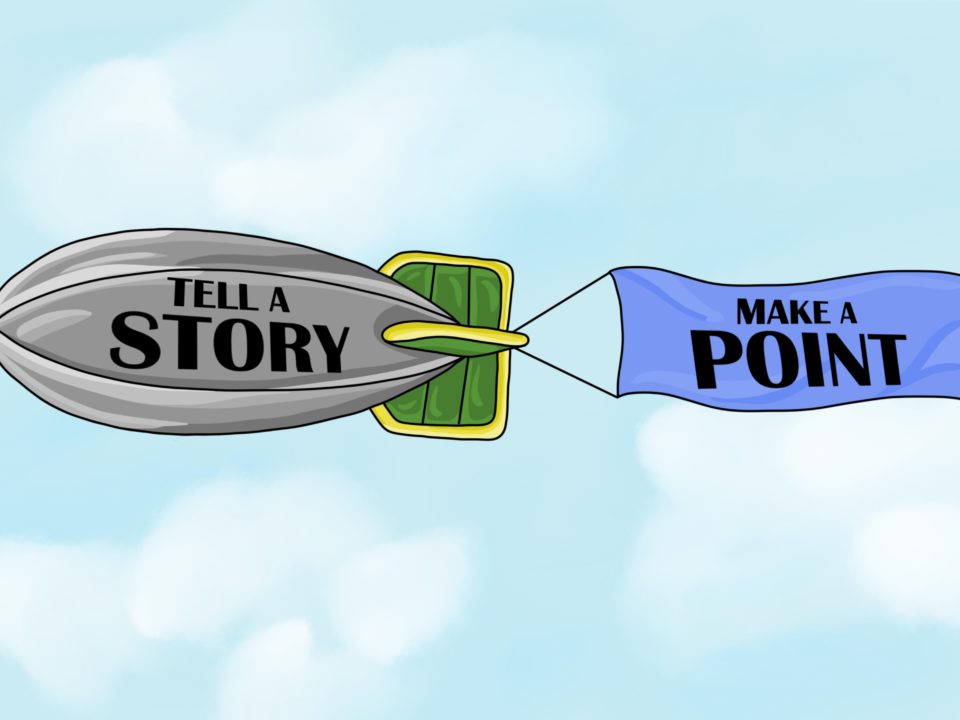- Contact Bob Goodyear at
- (404) 790-5855
- Bob@aGeekWhoSpeaks.com

Bring Your Speaking “B Game”
August 30, 2018
Too Much Information (TMI) Loses Your Audience
November 1, 20185 C’s of Great Stories – Followup

Storytelling
I’ve had the opportunity to train numerous technical sales teams on different soft skills, including stories. One of the techniques that I teach is the 5 C’s of storytelling, which I’ve written about previously. This is a difficult subject for many technical people. In every class, I generally get these 3 questions.
- When do I tell a story in a technical presentation?
- Why should I tell a story in a technical presentation?
- What kind of stories should I tell?
When To Tell a Story
The “traditional” technical sales presentation is usually a “data dump”. Because of that, audience expectations are usually very low.
Why is this? Well, there’s a belief that if a technical presenter uses stories during a presentation, he/she loses credibility. If you’re telling them, then you must be trivializing the subject.
Nothing could be further from the truth! Adding stories helps your audience be more interested in what you say.
Stories are ALWAYS appropriate anywhere in a technical presentation. Use a story in the beginning as an opening to gain attention. Stories in the middle of your presentation can illustrate your next point. Close with a story instead of the traditional “Do you have any questions?” remark.
Why Tell a Story
It’s becoming more apparent that technologists MUST tell stories in order to be listened to.
In the book titled The Storyteller’s Secret: From TED Speakers to Business Legends, Why Some Ideas Catch On and Other Don’t, the author, Carmine Gallo, says the following:
“Technologists and scientists no longer talk to just their peers. If they can’t explain the benefits of their products to consumers, their ideas won’t catch on. They must translate the language of bits and bytes into a story every consumer understands.”
According to this, we need to tell stories so that our consumers, or customers, can understand what we’re talking about. Anytime you are talking about something that might be difficult to understand, find a story that will help explain it!
What Kind of Stories
One type of story you can use is an analogy. Describe something that your audience understands and relate it to the concept you’re explaining. A simple one that I’ve used is to compare a filing cabinet to a computer file system. I compare the file cabinet to a file system, the drawers to directories, folders to sub-directories, etc. I know this has been used a lot but it’s easy to explain and understand.
Customer success stories are great to show the value of a product or feature. When you can show how someone else is successfully using the feature you’re describing then your audience can see an application to the concept. It shows the concept you’re explaining as being useful.
Using the 5 C’s to create stories will make them stand out and also make them easy to tell. How would YOU answer these questions? Share your thoughts with me in the Comments section.



